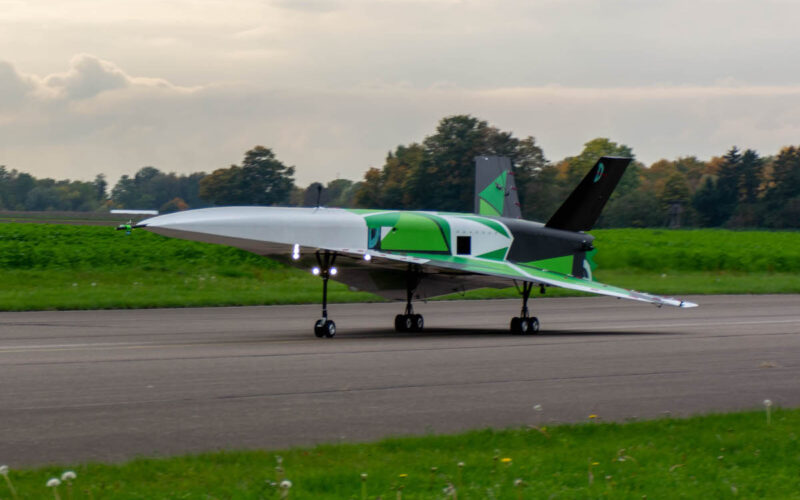Great power sabre-rattling, stoked by war in Ukraine and geopolitical tensions in the Pacific, is driving research in hypersonics.
The military and strategic applications of this technology are all too obvious, particularly when it comes to developing missiles that are increasingly hard to intercept.
But hypersonics may have some more peaceful applications as well, and some entrepreneurs are determined to prove it.
But let’s start with the basics: what is hypersonic flight?
A commonly accepted definition of hypersonics is that it includes anything flying at Mach 5 (five times the speed of sound) or faster.
An aircraft achieving these types of speeds would not be unheard of and not just because of the sonic boom. The North American X-15 achieved a speed of Mach 6.7 in 1967 (to put this in context, the fastest production aircraft, this is the double the maximum speed of Mach 3.3 of the SR-71 spy plane, the fastest serially produced aircraft). Five and a half decades later, it still holds the record for the fastest manned aircraft to have ever flown.
Wouldn’t it be great if we could hop from London to New York in little more than an hour or from Europe to Australia in less than four?
While the prospect of commercial supersonic flight making a comeback remains fraught with uncertainty, two startups, one of them in America, the other in Europe, are aiming to leapfrog this stage altogether and go hypersonic by the next decade.
Both startups are betting on a similar technological approach: the combination of a conventional jet engine, for take-off and landing, with a ramjet that would allow the aircraft to cruise at a speed of Mach 5.
Why two types of engines?
This is due to the properties of ramjets, which are structurally very simple engines with almost no moving parts. They do just one thing: ingest air and push it through a cylindrical shaft to achieve these super-fast speeds. They are unable, however, to start on their own, therefore requiring an additional conventional engine to get moving.
Who are the hypersonic entrepreneurs?
Hermeus, based in Atlanta, Georgia, has raised more than $100 million from a number of prominent investors, including funds linked to OpenAI CEO Sam Altman and billionaire investor Peter Thiel.
This startup is working on a family of hypersonic aircraft, the first of which will be a demonstrator called “Quarterhorse”, which will act as a test bed for the technology.
Hermeus intends to build and test several “Quarterhorses” and two other models are planned to follow suit: “Darkhorse” for military and cargo missions, and “Halcyon” for the passenger market.
Hermeus’ approach is to use as many already available technologies as possible in order to accelerate the project’s development. The company does as much as possible in-house, for example, using 3D printing to make parts and components.
The startup is developing an engine, which it calls “Chimera”, which combines a turbojet (from a legacy Northrop F-5 Tiger II fighter jet) to work as a starter engine and a ramjet.
How close is Hermeus to a breakthrough? In conversation with AeroTime, Hermeus founder and COO, Skyler Shuford, explained that the company is now conducting simulated ground testing of the transition mechanism (from conventional to ramjet propulsion). He also confirmed that the objective is to fly Quarterhorse by 2024 and to attempt to reach Mach 4, to be followed by Darkhorse probably a year or two after that. The goal is to be able to get the passenger-carrier Halcyon up in the air by the start of the next decade.
Destinus is another startup developing hypersonic aircraft for the civilian market. Based in Switzerland, Destinus is the brainchild of Mikhail Kokorich, a Russia-born physicist and entrepreneur with several successful ventures under his belt.
Destinus’ original plan was to develop a cargo aircraft capable of flying as fast as Mach 15, a tall order, even for a moonshot project. This has since been scaled down to a still formidable speed of between Mach 5 and 6.
Interestingly, the Swiss startup has also recently shifted its focus from the freight to the passenger market, which is where it believes the most promising opportunities will be.
Destinus has raised $40 million in funding so far, which it has put to use. In a call with AeroTime, Martina Löfqvist, business development manager at Destinus explained how the firm follows a rather hands-on approach with frequent testing. In this regard, Destinus has already flight-tested (not hypersonically yet!) two small-scale prototypes and in October 2022 it also tested the afterburner, a key element to accelerate the aircraft to hypersonic speeds.
Löfqvist confirmed to AeroTime that Destinus is aiming to conduct supersonic testing in 2024, to go hypersonic in 2025/2026 and to have its first airliner ready in the early 2030s.
And what about the environmental footprint of hypersonic aircraft?
In the current climate, this is an unavoidable question and one of the major elements casting a shadow of doubt over those projects that promise us faster flight.
Proponents of hypersonic technology have an answer to this. While the current prototypes consume jet A fuel and potentially, in the near future, sustainable aviation fuel, plans are already afoot to move onto hydrogen propulsion in the longer term. In particular, Destinus envisages its aircraft to be ultimately powered by liquid hydrogen and it is already planning to test hydrogen propulsion in-flight in the first half of 2023 and use hydrogen for acceleration to supersonic velocities in 2024.

